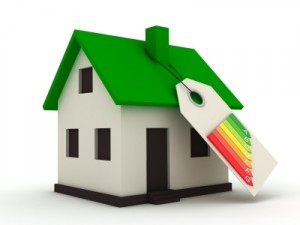 Air sealing the building envelope is one of the most critical features of an energy efficient home. As new homes grow increasingly tighter to achieve ever higher levels of energy efficiency, the potential for indoor air pollution also increases.
Air sealing the building envelope is one of the most critical features of an energy efficient home. As new homes grow increasingly tighter to achieve ever higher levels of energy efficiency, the potential for indoor air pollution also increases.
Modern Construction
During construction, there are hundreds of penetrations through a typical home’s exterior. These gaps and holes are often incurred during framing, and from penetrations for wiring, plumbing, and ducts. Air leakage accounts for 25–40% of the energy used for heating and cooling in a typical home. To make a home energy efficient, these gaps and holes are closed and insulated to prevent the loss of conditioned air.
Indoor Air Quality Concern
Good indoor air quality is achieved by reducing or eliminating sources of indoor air contamination and providing sufficient fresh air through the heating and ventilation system. While older homes were not energy efficient, they typically did not have problems with indoor air quality because they allowed for fresh air to freely circulate within the home.
As new homes grow increasingly tighter to achieve ever higher levels of energy efficiency, potential indoor air pollution also increases since many conventional building materials emit volatile organic compounds like formaldehyde. While energy efficiency is important, gains in energy efficiency, especially in new homes, should not come at the expense of deterioration of indoor air quality and corresponding adverse health impacts.
Source Elimination and Control
The best way to address indoor air pollution is through aggressive source elimination and control. Pollution should be prevented or reduced at the source whenever feasible.
- Building materials: If you are having the home constructed or remodeling your home select materials that do not emit volatile organic compounds.
- HVAC System: Make sure your HVAC system distributes the minimum level of outdoor air throughout the home using whole-house mechanical ventilation.
- Sealing Air Ducts: Sealing ducts can help improve indoor air quality by reducing the risk of pollutants entering ducts and circulating through your home as well as preventing the loss of conditioned air.
- Air Duct Cleaning: Ventilation systems distribute the air you breathe. Have the air ducts and HVAC system professionally cleaned to remove construction debris and pollutants.
- Monitor use of household cleaning supplies: Some household chemicals can be extremely dangerous. Choose environmentally safe cleaning supplies, and make sure that the area is well ventilated.
- Check exhaust systems: Make sure exhaust fans are clean and unobstructed. Exhaust systems are responsible for removing moisture, odors, fumes, and carbon monoxide.

